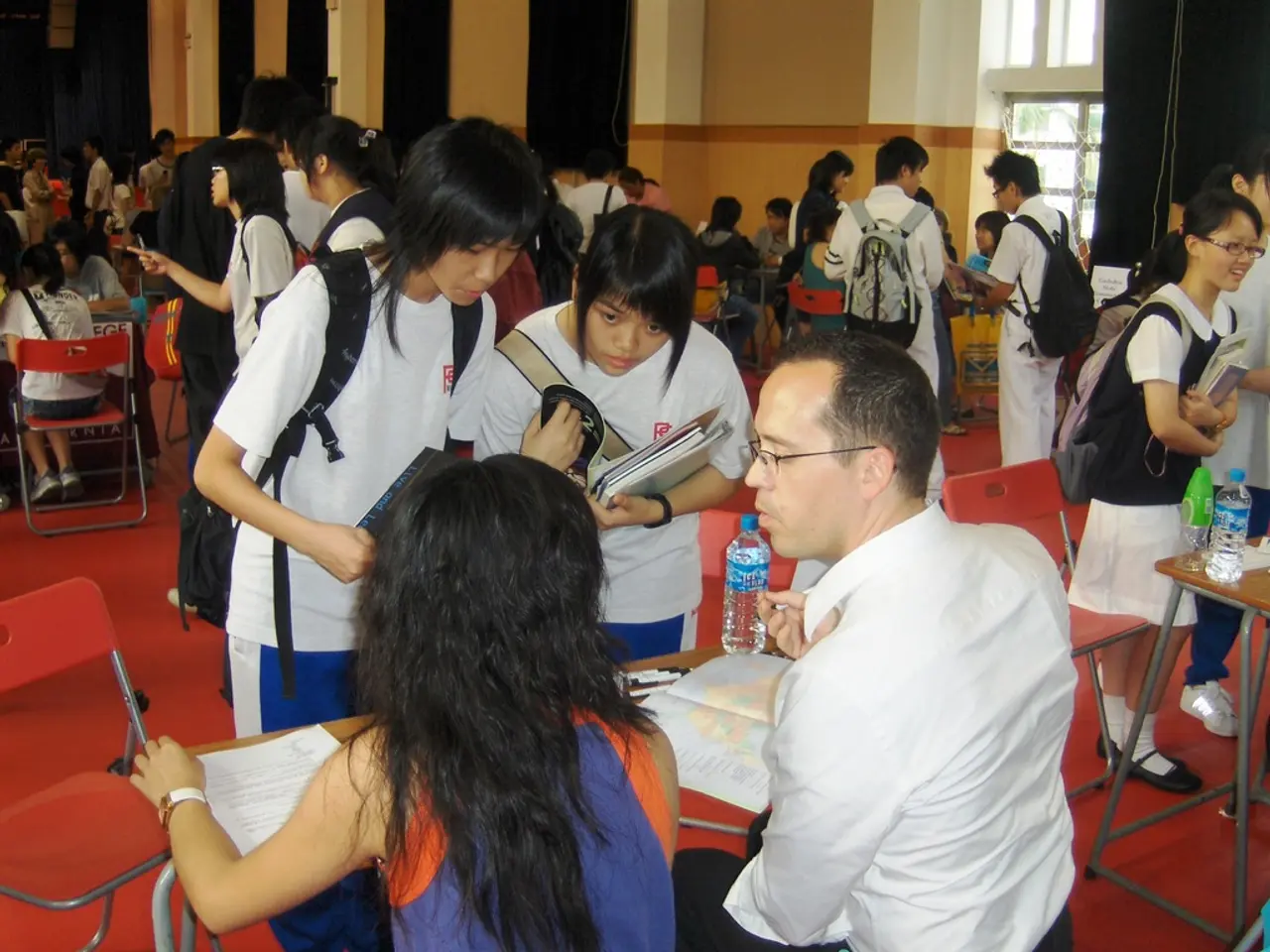India's Educational Institutions Require Structural Changes to Address Suicides, Rather Than Temporary Solutions
Supreme Court Issues Comprehensive Guidelines to Improve Student Mental Health in India
In a landmark decision, the Supreme Court of India has issued a set of 15 binding guidelines to safeguard and promote the mental health of students across the country's education system. These guidelines, aimed at creating a supportive environment and institutionalizing mental health support, were released in late July 2025 [1][2][3][4].
The guidelines focus on various aspects, including the adoption of a uniform mental health policy, the appointment of trained mental health professionals, the prohibition of harmful practices, and the establishment of emergency response protocols.
Every institution, including schools, colleges, coaching centers, and hostels, is mandated to adopt and annually update a mental health policy based on UMMEED, MANODARPAN, and the National Suicide Prevention Strategy. These policies must be publicly accessible [1][4].
Institutions with 100 or more students must appoint at least one trained mental health professional, such as a counsellor, psychologist, or social worker, specializing in child and adolescent mental health [2][4]. All teaching and non-teaching staff must undergo mandatory training twice a year by certified mental health professionals [2].
The guidelines also prohibit public shaming of students, segregating batches by academic performance, and setting unrealistic academic goals. Clear and written protocols for immediate referrals to mental health services, hospitals, and suicide prevention helplines must be established [2][4].
Hostels and residential institutions must install safety devices such as tamper-proof ceiling fans to prevent suicides [2]. Written suicide prevention protocols and the prominent display of helpline numbers in all student areas aim to make help-seeking visible, accessible, and stigma-free.
District-level monitoring committees, led by district magistrates, are to ensure compliance with the guidelines, and states and Union Territories are ordered to implement the rules within two months. The central government is required to file compliance affidavits within 90 days detailing progress [3].
The Supreme Court's reforms prioritise professional intervention, demand systemic safeguards, and root mental health practices in scientific practice. The potential efficacy of these reforms lies in real investments in hiring trained clinicians and creating safe, stigma-free spaces, which can lead to earlier identification of at-risk students, greater uptake of support services, and fewer tragedies.
Unfortunately, student suicides have been a recurring issue in India's educational institutions. In 2023, Kota saw the highest number of student suicides in recent years, with 26. Between 2014 and 2021, 122 students at IITs, NITs, and other Central institutions died by suicide. Four student suicides occurred in a year at IIT Kharagpur, and a student suicide in Vijayawada made national headlines.
The guidelines recognise the unique pressures of India's coaching hubs and institute heightened protections, career counselling, and stress mitigation in these high-risk zones. Coaching hubs with large migratory student populations, such as Kota, Chennai, and Delhi, must implement these protections and policies [1].
These guidelines represent a comprehensive legal framework to institutionalize mental health support, prevent suicides, and promote holistic well-being for students across India’s education ecosystem [1][2][3][4].
References: [1] The Hindu. (2025, July). Supreme Court issues guidelines to safeguard students' mental health. Retrieved from https://www.thehindu.com/news/national/supreme-court-issues-guidelines-to-safeguard-students-mental-health/article35007674.ece [2] The Indian Express. (2025, July). Supreme Court directs educational institutions to implement guidelines for student mental health. Retrieved from https://indianexpress.com/article/education/supreme-court-directs-educational-institutions-to-implement-guidelines-for-student-mental-health-7988345/ [3] Livemint. (2025, July). Supreme Court issues guidelines for student mental health. Retrieved from https://www.livemint.com/news/india/supreme-court-issues-guidelines-for-student-mental-health-11627164227334.html [4] India Today. (2025, July). Supreme Court issues guidelines to improve student mental health in India. Retrieved from https://www.indiatoday.in/education-today/story/supreme-court-issues-guidelines-to-improve-student-mental-health-in-india-1842574-2025-07-01
- To ensure holistic development, every educational institution must integrate mental health and wellness curriculum into their learning programs, focusing on personal growth, self-development, and health-and-wellness.
- In conjunction with the guidelines, state education boards should introduce practical training programs for teachers, enabling them to effectively identify and respond to students struggling with mental health issues, as part of their continuous professional development.
- As a proactive approach to addressing mental health concerns, schools and universities should foster an environment that emphasizes learning as a journey for self-improvement, rather than just a path to secure better career prospects, thus promoting a healthier balance between education-and-self-development and personal growth.




